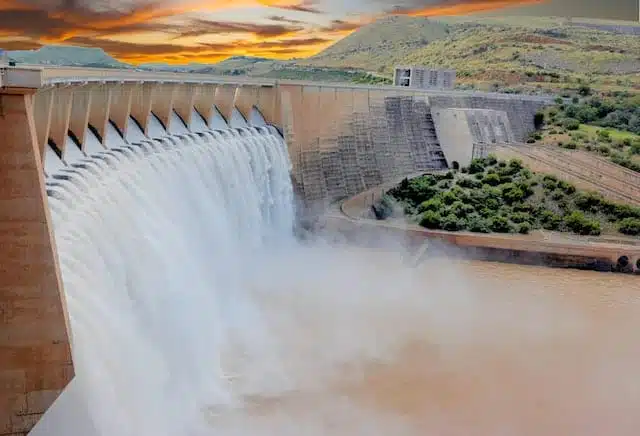Welcome to the largest Dams in the United States.
The United States is the world’s third-largest producer of hydroelectric power. In 2014, the ten largest hydroelectric power stations in the U.S. combined to generate 41,525 megawatts, enough to power over 18 million average-sized American homes.
You may be wondering, what are the largest dams in the United States? This article explores the top ten largest dams in the U.S. and their history and statistics.
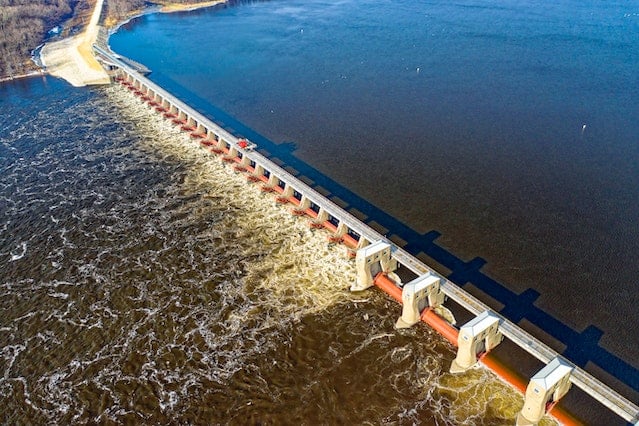
The largest dam in the United States is the Hoover Dam on the Colorado River in Nevada. The Hoover Dam impounds the Colorado River for hydroelectric power generation and water storage.
Grand Coulee Dam is the second largest dam in the U.S., located on the Columbia River in Washington. It is 550 feet tall and impounds the Columbia River for hydroelectric power generation.
Jump to any section or read the entire article:
Getting to Know Dams: Their Structures and Types
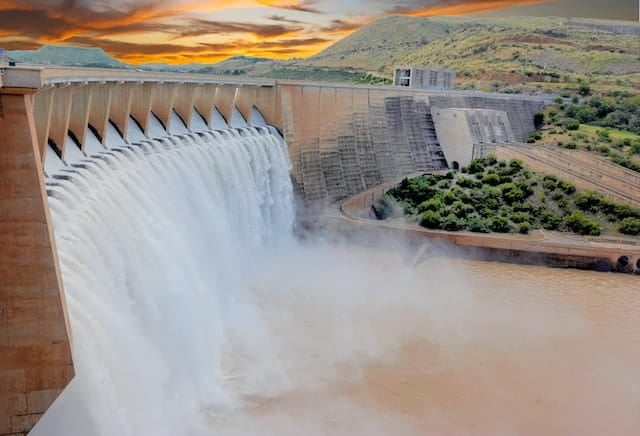
Dams are structures built across rivers or streams to hold back water. Typically they control flooding, create reservoirs for water supply, or generate hydroelectric power.
They come in various sizes and shapes, constructed using various materials such as concrete, earth and wood.
There are many different types of dams, but the two most common are gravity dams and arch dams.
Gravity dams are the heavier of the two and rely on their weight to hold back the water. Arch dams are lighter and use the pressure of the water to hold themselves in place. Both dams can be extremely effective, but each has advantages and disadvantages.
Dams are a vital part of our infrastructure and play a crucial role in our water supply and flood control. People would live a very different life without them as they play an integral role in our world.
The Concept Behind Building Large Dams
The large dam is a product of the Industrial Revolution and the rise of modern engineering. The first large dam appeared in the 19th century to provide water for factories and cities.
Dam constructions continued during the 20th century to provide irrigation water for agriculture and hydroelectric power for industry. Constructions are still underway today, but their primary purpose is to provide water for human consumption. It is because the industrial and agricultural needs for water can now be met by other means, such as desalination and water recycling.
As previously stated, the first large dams emerged in the early 19th century – the earliest known dam being the Jinsha River Dam in China, constructed in 1815.
Following this, the next large dam was built on the Danube River in Austria in 1817. People built these dams to provide water for factories and cities. Resulting from the Industrial Revolution, there was a heavily increased demand for water and power, leading to the construction of large dams.
The 20th century continued to see the construction of some of the largest dams. The Hoover Dam, in the United States, was completed in 1935 and remains one of the most well known and greatest dams ever built. At 726 feet tall, it holds the Colorado River water.
Another large dam at 11,811 feet long, the Aswan Dam in Egypt, was completed in 1970 and holds the Nile River.
The Purpose Of Building Dams
Dams are critical to our infrastructure, providing essential water storage, flood control, and hydropower. They are also complex structures that require careful design to ensure public safety and minimize environmental impacts.
The United States Dam Safety Program exists to protect 84,000 dams under its jurisdiction, as well as the people and property downstream of those dams.
- They accomplish this mission by working to ensure the stability and structural integrity of dams across the country.
- They fulfill the objective through dam safety inspections, risk assessments, dam failure investigations, research, and technical assistance to dam owners.
- They also reduce the risk of dam failures through our National Dam Safety Program, which provides federal leadership, coordination, and technical assistance to state and tribal dam safety programs.
- Their goal is to improve dam safety nationwide by working with partners to identify and address risks, promote best practices, and foster a safety culture.
The Largest Dams in the United States
There are many large dams located throughout the United States. These include the Glen Canyon Dam, the Fort Peck Dam, and the Oroville Dam. Each of these dams is an important part of the infrastructure of the United States.
Let’s explore further the largest dams in the United States:
#1 Diablo Dam (Washington)
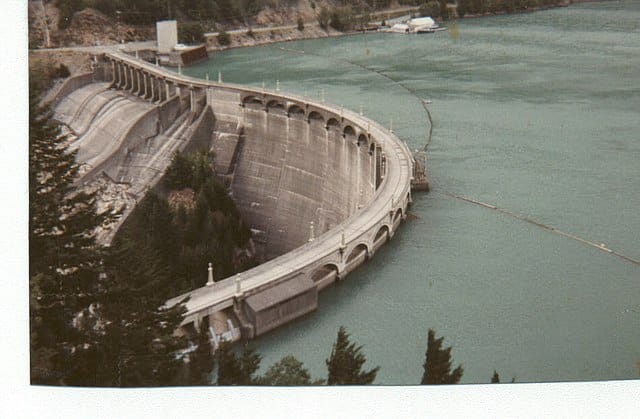
The Diablo Dam is a hydroelectric dam on the Pend Oreille River in northeastern Washington state, built in 1930. It is the tallest dam in the state at 380 feet. The Seattle City Light utility company operates the dam.
It is a key part of the Pend Oreille River hydroelectric system, which includes the Box Canyon Dam downstream. Together, the two dams generate enough electricity to power the whole city of Seattle.
The Diablo Dam received its name from the nearby town of Diablo, which was flooded by the reservoir created by the dam. Sadly the town’s residents underwent forced relocation due to the construction of the dam.
The dam is a popular tourist destination due to its scenic location and status as the state’s tallest dam. Visitors can tour the dam and the power plant, and a popular hiking trail leads to a viewpoint above the dam.
#2 Ashfork-Bainbridge Steel Dam (Arizona)
The Ashfork-Bainbridge Steel Dam is a steel-girder arch dam on the Little Colorado River in Arizona. It is located in the Coconino National Forest, about 7 miles (11 km) upstream from the town of Ashfork.
Constructed between 1931 and 1933 by the United States Bureau of Reclamation, and at the time it was the tallest steel-girder arch dam in the world.
The dam is 1,200 feet (370 m) long and has a height of 380 feet (116 m). The spillway is located on the left side of the dam and has a capacity of 42,000 cubic feet per second (1,200 m3/s).
The dam’s reservoir, called the Ashfork-Bainbridge Reservoir, has a capacity of 73,000 acre-feet (89,000,000 m3).
The Ashfork-Bainbridge Dam provides irrigation, flood control, and hydroelectric power generation. Its power plant has a capacity of 9 megawatts (12,000 hp) and generates an average of 52,000 megawatt-hours of electricity per year.
#3 Grand Coulee Dam (Washington)
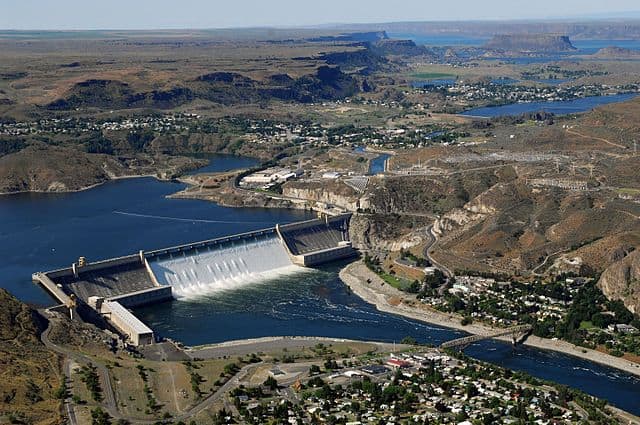
It is a gravity dam in the Columbia River in the U.S. state of Washington. The dam spans the Grand Coulee, a long, deep gorge carved by the river. It is not only the largest hydropower facility in North America but also the largest concrete structure in the nation.
The dam was built to provide irrigation water for the dryland farming areas of Central Washington. Originally, the dam was also intended to produce electricity, but it did not realize this purpose until 1941, when the first powerhouse was completed.
It has provided irrigation water for over a million farmland acres and generated electricity for the Pacific Northwest. The dam has also created a large reservoir, the Franklin D. Roosevelt Lake, which is popular for recreational activities.
#4 Fort Peck Dam (Montana)
The Fort Peck Dam is a massive hydroelectric dam in Montana on the Missouri River. It is one of the country’s tallest dams, standing over 200 feet tall, and impounds a large reservoir known as Fort Peck Lake.
The reservoir is over 120 miles long and is a popular recreation destination. It was built in the 1930s as part of the Great Depression-era public works projects.
At the time, it was the largest dam project ever undertaken. The dam continues to generate electricity and is currently an important part of the regional power grid.
#5 Oroville Dam (California)
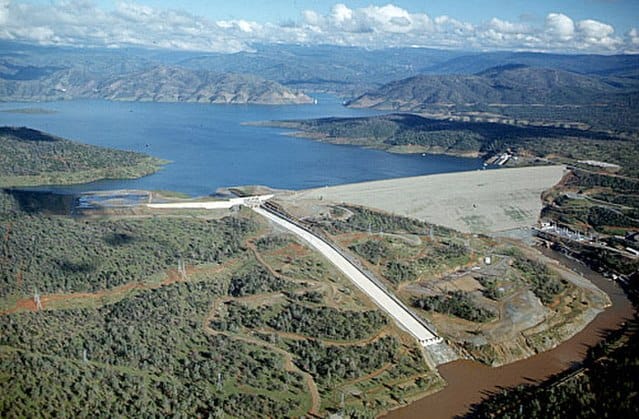
The Oroville Dam is a flood control dam located in Northern California on the Feather River. It is the tallest dam, measuring 770 feet, in the United States. The Oroville Dam has been in operation since 1968 and provides hydroelectric power generation and water storage for the region.
The dam is currently facing some serious problems. In February 2017, the dam’s main spillway collapsed, causing severe damage. It led to the evacuation of 188,000 people living downstream of the dam.
Currently, the dam is undergoing repairs, expected to finish by the end of 2022.
#6 Buffalo Bill Dam (Wyoming)
The Buffalo Bill Dam is a large dam located in the state of Wyoming in the United States. The dam is named after Buffalo Bill Cody, a famous American frontiersman and showman. It was built between 1905 and 1911 and was one of the first large dams in the United States.
The dam is situated on the Shoshone River and impounds a large reservoir called Buffalo Bill Reservoir. The concrete gravity dam is 305 feet (93 meters) high and 1,560 feet (476 meters) long. It is a famous recreation destination for fishing, boating, and swimming, making it one of Wyoming’s most popular tourist attractions.
#7 Hoover Dam (Nevada)
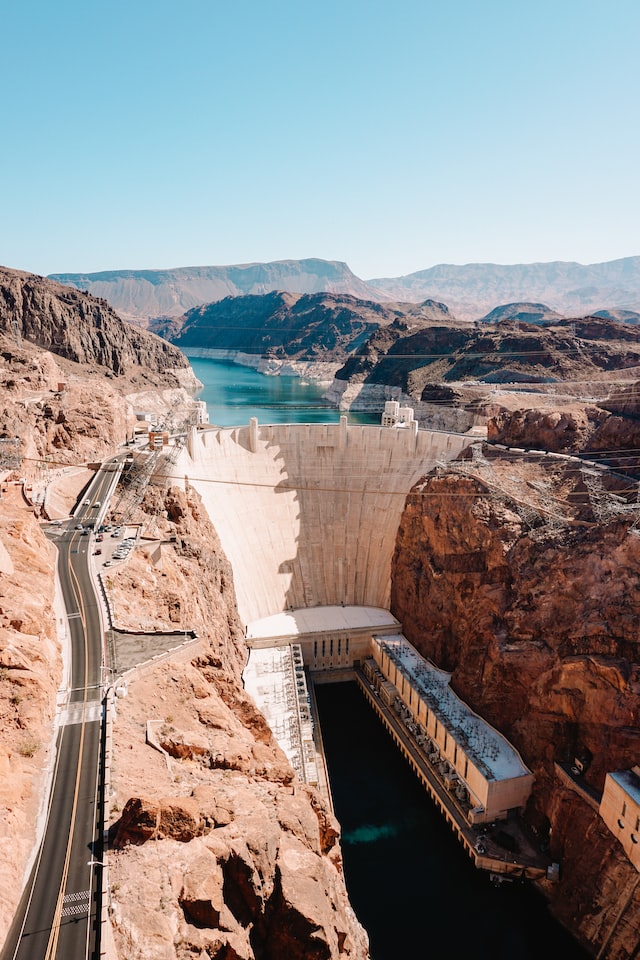
The Hoover Dam is a famous tourist destination in the United States. The dam, which is a concrete arch-gravity dam, was constructed during the Great Depression between 1931 and 1936. It is located between the states of Arizona and Nevada.
The dam, named after President Herbert Hoover, was originally built to provide irrigation water for the Imperial Valley in California and hydroelectric power for the growing city of Las Vegas.
The dam stands 726 feet (221 m) tall from its foundation and is 1,244 feet (379 m) long. Other than being a famous tourist destination, it is also a National Historic Landmark.
#8 Mansfield Dam (Texas)
The Mansfield Dam is a gravity dam located in the U.S. state of Texas. The dam is situated on the Colorado River about 25 miles (40 km) northwest of Austin.
It impounds Lake Travis, a reservoir for the Highland Lakes chain. The dam is named after James Mansfield, who was the mayor of Austin from 1874 to 1876. It is operated and owned by the Lower Colorado River Authority.
The Mansfield Dam constitutes of concrete and is 919 feet (280 m) long and 183 feet (56 m) high. The dam has a spillway that is 1,650 feet (503 m) long and can discharge up to 83,000 cubic feet (2,360 m3) of water per second.
The dam’s power plant houses six generators with a combined capacity of 156 megawatts (210,000 hp).
The reservoir created by the Mansfield Dam, Lake Travis, is one of the largest reservoirs in Texas.
It has a capacity of 1.62 million acre-feet (2.0 km3) of water and a surface area of 18,622 acres (75.2 km2). The reservoir allows for recreation, flood control, and hydroelectric power generation.
#9 Fontana Dam (North Carolina)
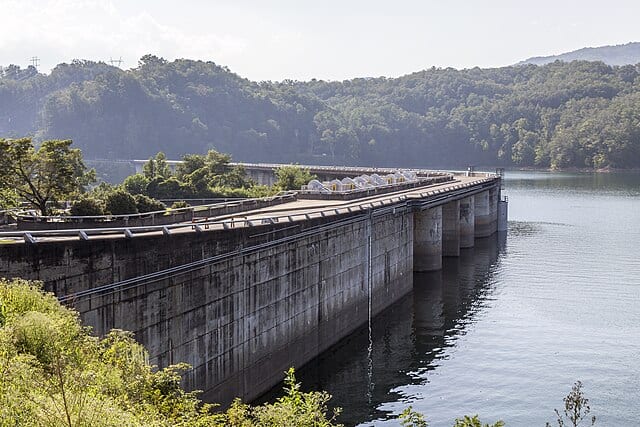
The Fontana Dam is a concrete arch dam on the Little Tennessee River in the southeastern United States.
This dam is located in the Great Smoky Mountains National Park, and its reservoir, the 12,000-acre (49 km2) Fontana Lake, is the largest lake in the park. It is named after its builder, the Tennessee Valley Authority (TVA), and was completed in 1944.
The dam is one of the tallest dams in the eastern United States, standing 480 feet (146 m) high and 2,365 feet (721 m) long. It is also one of the largest dams of its type in the world. The dam’s outmost purpose is to generate hydroelectric power, providing flood control and opportunities for recreatinal activities.
The Fontana Dam is a concrete arch dam, meaning that it is in the shape of an arch. The dam is 2,365 feet (721 m) long and 480 feet (146 m) high.
The Eastern United States is home to some of the tallest dams in the world. This particular dam’s concrete structure contains more than 4 million cubic yards (3 million cubic meters) of concrete, making it the largest concrete dam ever built.
The dam was built for many reasons, primarily to generate hydroelectric power. It also provides flood control and recreation for the people living nearby. The Fontana Dam is one of the many dams the TVA has built in the Tennessee Valley.
#10 Shasta Dam (California)
The Shasta Dam is a concrete gravity dam on the Sacramento River in northern California in the United States.
More specifically, it is located in the Shasta-Trinity National Forest and is operated by the U.S. Bureau of Reclamation. Its main purpose is hydroelectric power generation to store water for irrigation. Lake Shasta is the name of the reservoir that the dam form.
At 602 feet (183 m) high, the Shasta Dam is the second-tallest dam in the United States, completed in 1945. At the time of construction, it was the tallest dam in the world. The dam is a key component of the Central Valley Project, including the Friant Dam on the San Joaquin River.
Together, the Shasta and Friant dams provide about a third of the irrigation water for the Central Valley of California.
The Shasta Dam is a popular tourist destination, with a Visitor Center and an adjacent recreation area. The dam is also popular for fishing, camping, and boating.
Dam Statistics and Information
The dams, which number more than 3,000, in the United States are a critical part of our water infrastructure. They provide water for irrigation, drinking, and various industries; as well as generating hydroelectric power and help control floods.
An average dam in the U.S. is more than 50 years old, and many need repair or replacement. The cost of repairing and maintaining our dams is estimated to be more than $50 billion over the next 20 years.
Dams are a vital part of our water infrastructure, and we need to invest in them to ensure that they can continue to provide the benefits we rely on them for.
Dam Safety
Dam safety is critical for dam owners, operators, and communities downstream from dams.
They can fail suddenly and without warning, resulting in loss of life, property damage, and environmental damage. Dam safety is a complex issue, and there are many factors to consider when assessing the safety of a dam.
These factors include the dam’s design, the materials used in its construction, the condition of the dam’s foundation, the dam’s hydrology, and the dam’s operation and maintenance.
Dam operators must constantly monitor the condition of their dams and take action to address any problems that arise. Their safety is an ongoing process, and dam operators must work closely with dam safety experts to ensure that the largest dams in the United States remain safe.
Bottom Line on the Largest Dams in the United States
The largest dams in the United States are an impressive feat of engineering. They are equally a reminder of the power of nature.
These dams provide vital water resources for many people and play an important role in the economy. While they may be a source of contention for some, it is important to remember their numerous benefits.
If you like the article also have a look at our other USA posts.
Join our Forum for free today!


